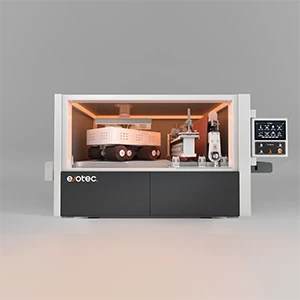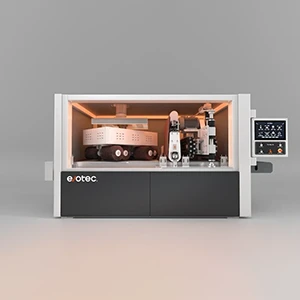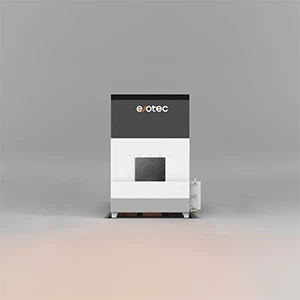Types of Burrs and How Deburring Machines Handle Them
Burrs are inevitable in modern metal fabrication. Whether from laser cutting, milling, punching, or drilling, these small, raised edges or residual fragments can compromise part fit, coating adhesion, and overall product performance. Left untreated, burrs may also pose safety risks and accelerate component wear. Understanding the different types of burrs and how automated deburring systems remove them is essential for achieving consistent quality, meeting industrial standards, and optimizing downstream processes.

Key Takeaways
Common Types of Burrs
Burrs are formed when material deforms rather than shears cleanly during machining. Identifying their type determines which removal process will be most effective.
- Roll-over Burr – Caused by deformation when material bends over rather than breaking off cleanly, leaving a curled edge.
- Poisson Burr – Occurs when lateral stretching of material near a cut edge forms a thin, flange-like projection.
- Cut-off Burr – Appears when a cutting tool separates the material unevenly, leaving sharp or ragged protrusions.
- Secondary Burr – Small remnants formed during an incomplete or improper deburring process.
- Pipe Burr – A hollow burr seen along drilled holes or tubular features where chips remain attached inside the bore.
- Thermal Burr – A heat-induced residue or slag that appears after plasma, laser, or flame cutting.
Even microscopic burrs can cause misalignment, surface defects, or localized stress points that reduce fatigue strength. In coating and plating, they interrupt surface uniformity and prevent proper adhesion—leading to corrosion or finish defects.
Why Automated Deburring Matters
Manual deburring—whether by file, abrasive pad, or grinding tool—has long been a finishing solution, but it brings inconsistency, fatigue, and high labor costs.
Automated deburring machines eliminate these variables. Using precisely controlled mechanical modules, they deliver repeatable edge quality, reduce injury risks, and shorten production cycles.
Modern systems from manufacturers like Evotec employ technologies such as Automated Abrasive Control (AbrasiveSync) and Smart Parameter Recall (Parameta) to fine-tune abrasive pressure, belt tracking, and feed rate—ensuring that every workpiece is finished to the same precision standard.
How Deburring Machines Handle Burrs
Automated machines remove burrs through a combination of mechanical, pneumatic, or vibratory actions, depending on burr geometry, hardness, and workpiece material.
- Grinding (Drum Head Modules) – Uses wide abrasive belts to remove heavy roll-over or cut-off burrs. The drum’s belt pressure and grit size determine the depth of material removal and surface finish uniformity.
- Rotary and Top Brushes – Multi-directional brushes rotate and oscillate to eliminate lateral and internal burrs, achieving consistent R2+ edge rounding while maintaining sharp feature integrity.
- Vibratory Deburring – Involves tumbling small parts in abrasive media for uniform deburring and surface smoothing—ideal for mass finishing of small components.
- Ultrasonic or Pneumatic Tools – Handle delicate geometries and precision parts where mechanical contact must be minimized.
Process parameters such as drum speed, brush pressure, and conveyor feed rate define the balance between throughput and finish quality. A slower conveyor allows longer abrasive contact for finer surface finishing, while higher speeds enhance productivity in rough deburring stages.
Machine Configurations and Workpiece Stability
The efficiency of deburring depends not only on the abrasive process but also on workpiece retention and overall system design.
- Single-Head Drum Systems – Suitable for general-purpose deburring and deslagging.
- Dual or Tri-Head Configurations – Combine sanding and brushing modules for sequential operations—deburring, edge rounding, and surface finishing—in a single pass.
- Vacuum and Magnetic Retention (EvoFlow AirLock & MagniLock) – Secure workpieces during processing, preventing vibration or slippage and ensuring consistent results on both ferrous and non-ferrous materials.
- Wet Extraction Systems (HydroDust 2.0) – Essential for aluminum and stainless-steel processing, wet collectors prevent dust ignition, remove airborne particles, and extend abrasive life by maintaining a clean operating environment.
Systems like EdgeX SDR and Surfex SRS integrate multiple finishing stages—drum heads for burr removal, brushes for edge rounding, and a final head for surface refinement—enabling complete part preparation in one continuous process.
Advantages of Automated Deburring
- Consistent Quality – Automated abrasive control and smart recall functions ensure repeatable results across batches.
- Precision and Safety – Servo-controlled modules and intelligent monitoring systems minimize operator risk while ensuring high tolerance accuracy.
- Labor and Energy Efficiency – Up to 30% lower energy consumption and single-operator control reduce overall operating costs.
- Improved Downstream Performance – Rounded, oxide-free edges enhance paint adhesion, weld quality, and assembly fitment.
- Environmental Safety – Integrated wet extraction and dust management systems promote a cleaner, safer workspace.
Selecting the Right Deburring System
Choosing a deburring machine requires evaluating part geometry, material type, burr size, and finishing requirements.
For instance:
- Heavy slag removal calls for systems like SlagMaster HS, featuring a Slag Hammer module to pre-treat flame or plasma-cut parts.
- Line-grain and visual finishing benefit from Surfex SRS, which delivers a uniform brushed texture.
- R2+ edge rounding and non-directional finishing are best achieved with EdgeX SDR, combining drum, top, and rotary brushes for all-in-one refinement.
The right configuration ensures consistent output, reduces rework, and supports higher throughput—all critical factors in lean manufacturing.
Burr removal isn’t just a finishing step—it’s a precision process that determines product reliability, aesthetics, and safety. Automated deburring systems have evolved into intelligent, multi-functional platforms that combine high-speed precision with real-time control. For manufacturers striving toward leaner, safer, and more consistent production, investing in an advanced finishing solution is more than an upgrade—it’s a step up in efficiency that empowers.
FAQs
1. Which process removes burrs from laser-cut parts most effectively?
Laser-cut edges typically require sanding drum and brush combinations to remove slag and oxide, followed by edge rounding to improve paint adhesion.
2. How do I decide between wet and dry systems?
Wet systems are recommended for aluminum and stainless steel to eliminate dust-related fire risks, while dry systems work well for mild and carbon steel.
3. What is R2+ edge rounding, and why is it important?
R2+ edge rounding refers to a controlled radius of over 2 mm along the edge—improving safety, durability, and coating performance on finished parts.
4. How often should abrasives be replaced?
With Evotec’s EvoGrit 3.0, abrasive lifespan is extended up to 38% longer than conventional media, minimizing replacement frequency and downtime.
Experience next-generation finishing with Evotec.
Explore the EdgeX, Surfex, and SlagMaster series on our website or contact our technical team to schedule a live demo and discover how automation can redefine your edge.








